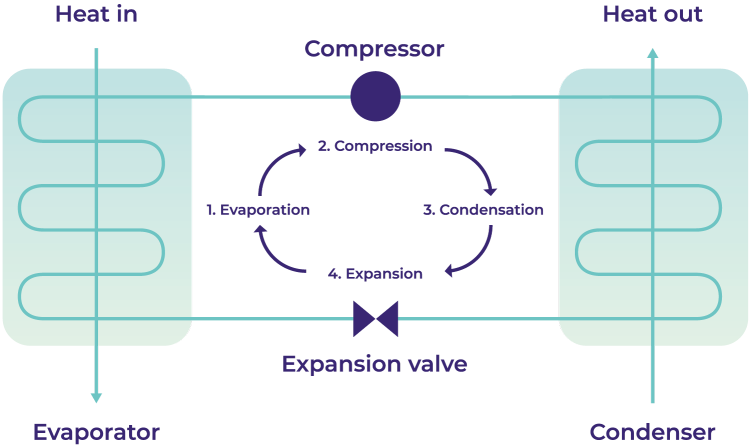Wolfson College fulfils pledge to make decarbonisation a priority following £5m funding

Project overview
Located alongside the River Cherwell, Oxford University’s Wolfson College is working to decarbonise its estate following a £5m grant from Phase 2 of the Public Sector Decarbonisation Scheme (PSDS). The project is estimated to save 846 tonnes of carbon annually.
Founded in 1966, the college’s estate includes Brutalist buildings by iconic architecture duo Philip Powell and Hidalgo Moya, which are grade II listed. Over the last decade, Wolfson College’s team have worked to increase the sustainability of its buildings by installing solar photovoltaic cells to the roof of the main building along with a green roofing system made from sedum, a flowering succulent, on the Academic Wing.
The college’s 2020 Estate Strategy pledged to sharpen its focus on decarbonisation. Its release was accompanied by an energy audit and decarbonisation plan which sought to assess the areas in need of improvement. This evaluation was facilitated by the Low Carbon Skills Fund (LCSF), which is also funded by The Department of Business, Energy, and Industrial Strategy (BEIS) and delivered by Salix Finance.
The energy audit in 2020 revealed that upgrades were needed if the college was to meet its 2030 net-zero goal.
Furthermore, the college’s Phase 2 PSDS project sought to improve energy efficiency by installing decarbonising technologies such as double glazing and air source heat pumps.
Increasing the efficiency of the estate
In August 2021, the college set to work on modernising the single glazed windows and fossil fuelled boilers.
Fifty percent of single-glazed windows have since been upgraded to triple glazing and associated insulation, while air source heat pumps (ASHP) have been commissioned to replace outdated gas boilers from the summer of 2022.
These units deploy carbon dioxide as a refrigerant (in a sealed system), allowing for efficient higher-temperature output. The pumps and fabric upgrades will reduce the main estate’s carbon footprint by up to 80 percent.
This will be one of the largest heat pump programmes to be undertaken in the UK and one of the largest to be retro-fitted to an estate of this size and complexity.
Following a system redesign, the college has reduced nine district heat exchangers down to two centrally located main units and installed 600m of pipework underneath the college. Where electricity is required, this will be from 100 percent renewable energy, ensuring that no carbon is emitted in heating the buildings or generating hot water.

Future plans
Moving forward, the college is looking to replace the remaining single-glaze windows on the main estate and insulate all flat-roofed buildings to prevent heat loss and reduce energy use.
Wolfson also intends to introduce additional solar photovoltaic panels, upgrade all lighting to LED and install a new 1MWh electrical storage battery. This battery will enable the college to draw electricity at peak times and store energy during quieter periods.


